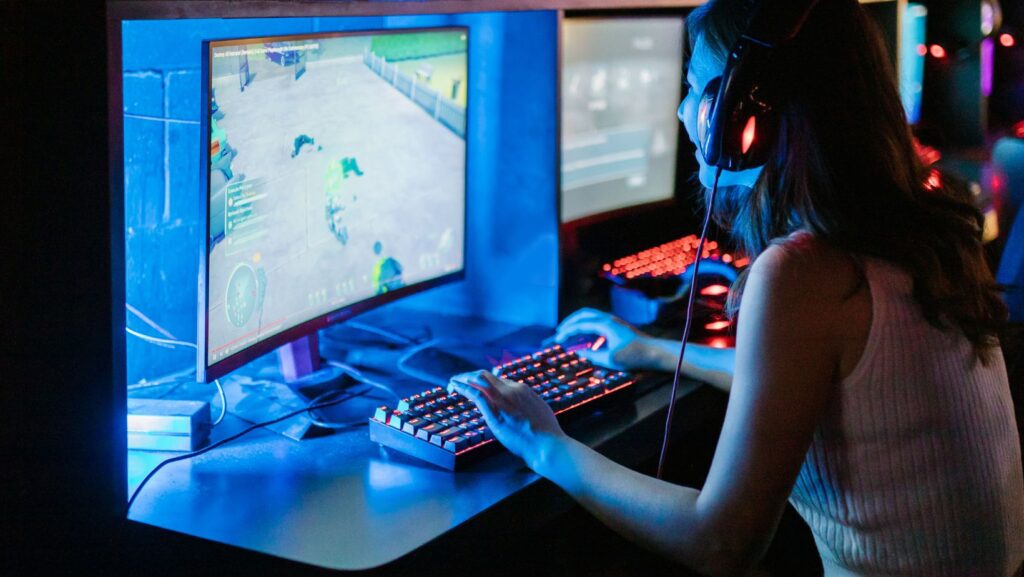In an age of endless digital stimulation, Gen Z has mastered the art of jumping in and out of content faster than any generation before. They swipe through TikToks at lightning speed, text in memes and emojis, and have fully embraced the idea that everything online should be instant, intuitive, and—most importantly—on their terms.
It’s no surprise, then, that their approach to gaming is evolving as well. Long gone are the days when immersive, 100-hour campaigns were the gold standard. Instead, short, snackable, and browser-based games are finding a new home in the hands of Gen Z users — not despite their simplicity, but because of it.
The Rise of Fast-Play Culture
Fast-play games are designed for micro-moments: while waiting for coffee, commuting, or taking a five-minute break between classes. They ask for no download, no login, and no instructions. The goal? To deliver instant engagement in five seconds or less.
This aligns perfectly with Gen Z’s digital behavior:
- They value efficiency over complexity
- They toggle between apps constantly
- They expect feedback immediately
- They dislike unnecessary friction
Games like mines turbo games exemplify this trend. They’re browser-based, ultra-lightweight, and focused on immediate interactivity—requiring no more than a tap to play. For Gen Z, who grew up with mobile-first design and intuitive UX, this feels not just natural, but necessary.
Not Gamers—Players
It’s worth noting that Gen Z doesn’t necessarily identify as “gamers,” even though they play games daily. Their version of gameplay is deeply embedded in their broader media habits. Swiping, clicking, reacting — it’s all interaction.
For this generation:
- A quick game is just another form of scrolling
- Playing happens in between other tasks
- Game time = mental reset, not commitment
In that sense, fast-play titles function more like digital palate cleansers than full-course meals. They’re a way to clear mental cache, not to achieve status or climb leaderboards.
Cognitive Relief, Not Competition
Gen Z is also more aware of their mental health than previous generations — and they’re selective about how they use their time. Many short-form games offer low-pressure fun that acts as a form of self-regulation.
Unlike traditional games that may demand extended concentration, fast-play games:
- Provide quick dopamine hits
- Require minimal cognitive effort
- Offer a sense of control (easy in, easy out)
- Avoid performance anxiety or skill-based judgment
This makes them perfect for breaks during study sessions, stress relief between meetings, or simply zoning out before bed.
UX That Gets Out of the Way
What makes these games so effective isn’t just their simplicity — it’s that the user experience is designed to disappear.
Games like mines turbo games don’t:
- Require sign-ups
- Show pop-ups
- Force tutorials
- Redirect to app stores
Instead, they respect the user’s time and autonomy. This minimalist interaction style mirrors other Gen Z-preferred platforms like BeReal or Instagram Notes—tools that are immediate, low-maintenance, and emotionally lightweight.
Frictionless Fun in a Friction-Filled World
For Gen Z, who live in a world of push notifications, algorithmic feeds, and constant updates, frictionless entertainment feels like a luxury. It gives them space to disconnect without fully unplugging.

That’s why fast-play games are so appealing. They:
✅ Load instantly
✅ Don’t require attention span planning
✅ Offer gameplay with no consequences
✅ End as quickly as they start
And while they may not compete with high-end console games in terms of production, they excel in one thing Gen Z craves most: freedom.
Not Just a Trend—A Shift in Digital Attention
Some may see these games as superficial or forgettable. But they’re actually part of a broader evolution in how Gen Z consumes digital content:
🎧 From full albums → to 15-second TikTok sounds
🎮 From epic games → to browser-based bursts
📺 From movies → to reels and shorts
Each shift reflects a changing relationship with attention, time, and digital energy. Gen Z is not “addicted” to their phones; they’re simply using them in ways that feel efficient, adaptive, and emotionally manageable.
Fast-play games, in this sense, are a technological response to emotional demand.
Where It’s Going
Expect to see more of these games integrated into daily platforms. The same way stories and short videos became part of social media, microgames may find their way into chats, smart watches, notification centers, and wearable tech.
Why?
- They require no app loyalty
- They work on every device
- They’re fun in 15 seconds or less
For Gen Z, that’s all the time that matters.
Final Thoughts
Gen Z isn’t just changing what we play — they’re changing how and why we play. Their habits reflect a new rhythm of digital life: one where content comes in small doses, interaction is quick and optional, and entertainment needs to fit into every corner of the day.
Games like mines turbo games aren’t trying to replace traditional gaming. Instead, they fill a different role entirely — one defined by ease, access, and autonomy.
Five seconds at a time.


